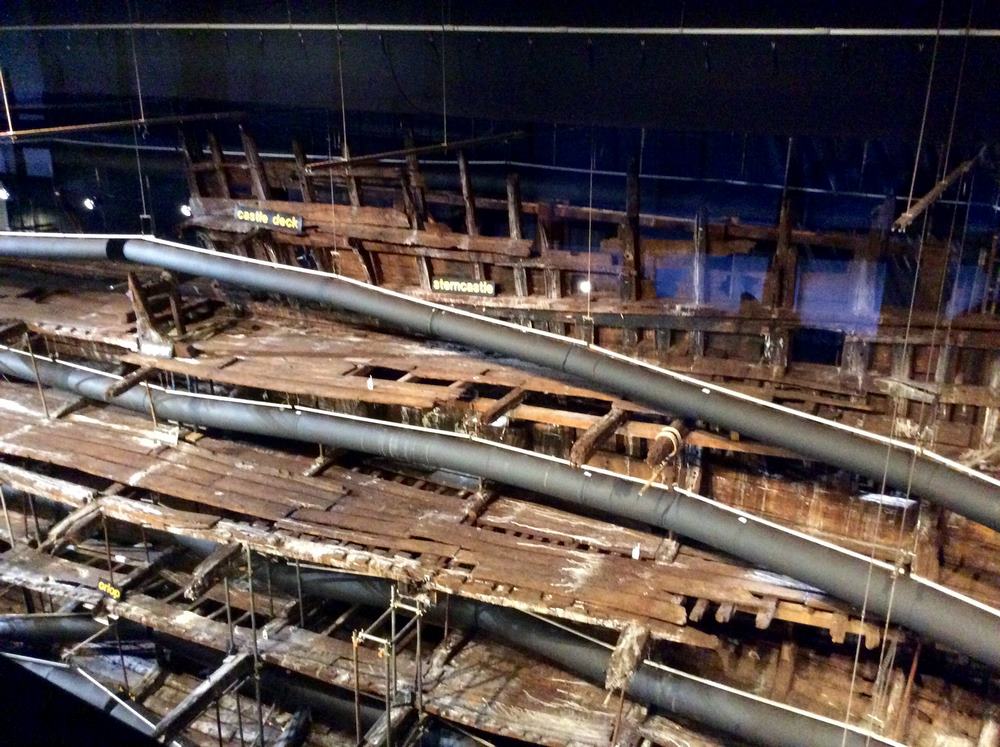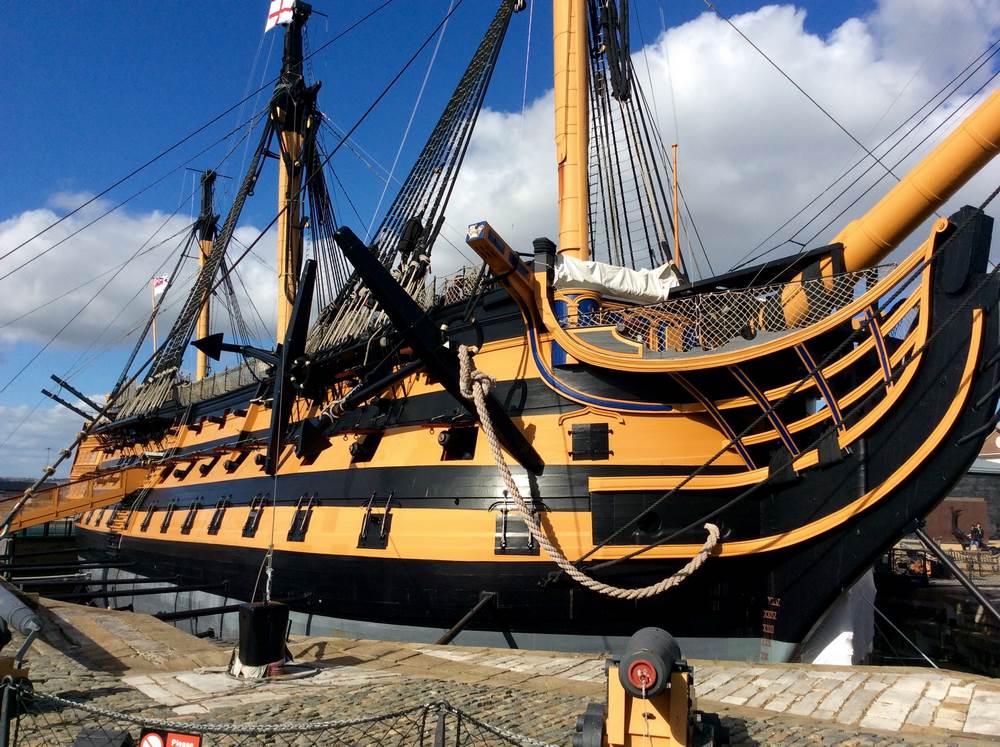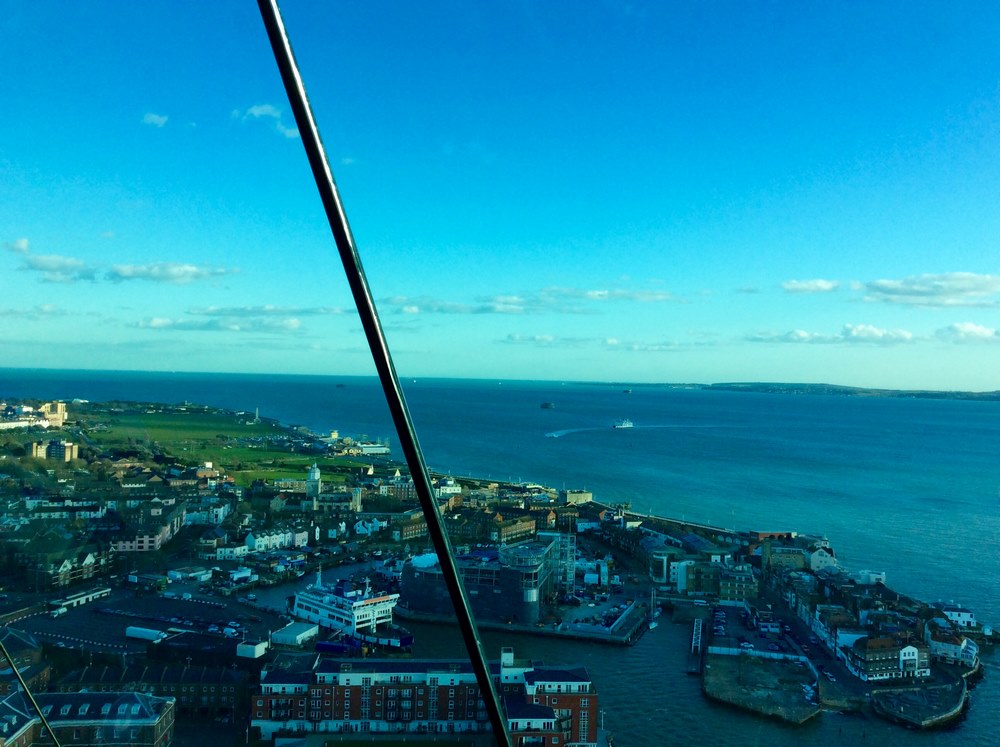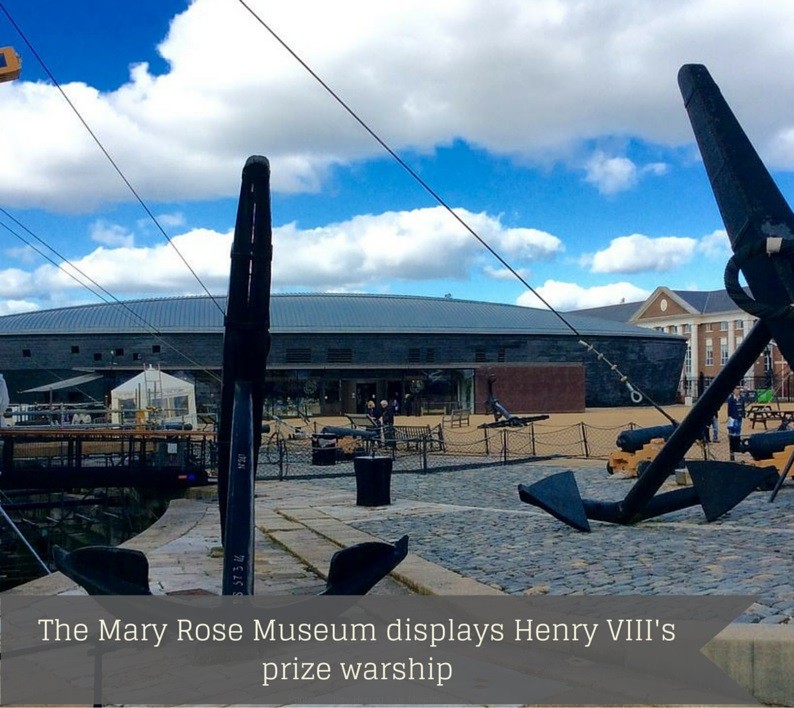Portsmouth, England
Tim Cooke
It’s an astonishing window on history – now the view into the world of Henry VIII and his sea battles with the French has just got even better.
After a final phase of conservation and interpretation, visitors to the Mary Rose Museum at Portsmouth Historic Dockyard on England’s south coast can get closer than ever to Henry’s prized warship sunk by the French during the Battle of the Solent in 1545.

New direct views of the Mary Rose (courtesy of The Mary Rose Trust)
This museum opened first in 2013 but its main section closed last year for the final phase of conservation and display.
Since the 2013 opening, a conservation hotbox has been in place, treating the timbers of the wreck brought up from the seabed in 1982. Now hundreds of metres of black ducting, which previously obscured much of the ship, have been removed. Visitors now get full uninterrupted views of the ship and get can into the same space as the Mary Rose via an airlock.

The conservation ducting in this photo has now been removed
This will now enhance what was already a fascinating experience and give a real sense of direct engagement with the ship – akin to the thrilling Vasamuseet in Stockholm.
Visitors to the Mary Rose Museum are offered a rich interpretive experience. When the ship sank all but 30 or so of just over 400 soldiers, mariners and gunners lost their lives and the objects recovered and now on display are admirably deployed to tell their stories.
Among the many tales revealed is that of ‘Hatch’, the ship’s dog. The dog’s skeleton survived under the sea for 437 years and is now a key attraction. ‘Hatch’ was a cross between a terrier and a whippet – and an excellent rat-catcher no doubt.

The skeleton of ‘Hatch’ the ship’s dog
Alongside the Mary Rose Museum in Portsmouth is a surfeit of other delights – the magnificent HMS Victory (Lord Nelson’s flagship at the Battle of Trafalgar in 1805) and the National Museum of the Royal Navy for example. And if all that history proves overwhelming it’s only a stroll to the eye-catching and somewhat more contemporary 170 metre-high Spinnaker Tower where you can catch a ride to the top for the astounding views across the Solent and the Dockyard. It’s a view not to be missed.

HMS Victory

View from the Spinnaker Tower
What a dramatic, unique and engaging array of attractions! Well worth a visit!

